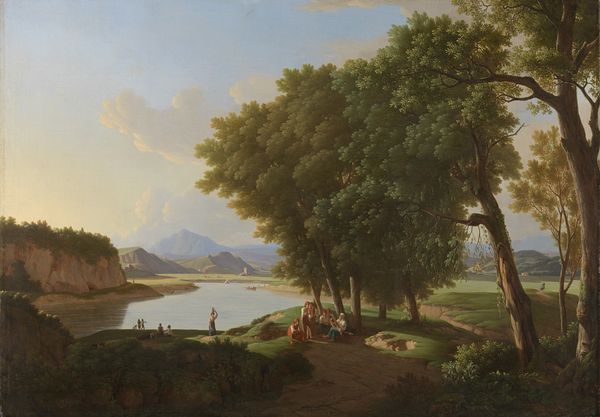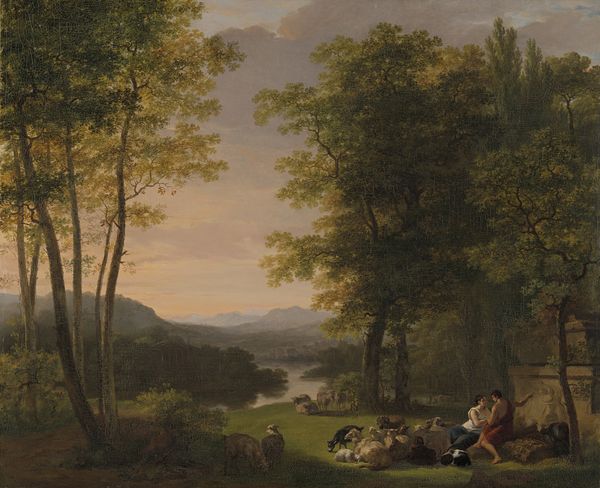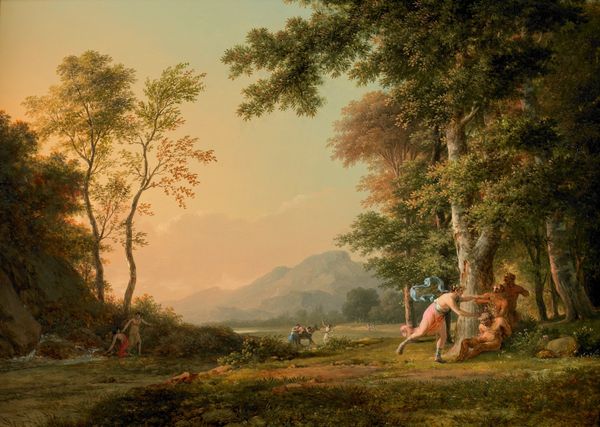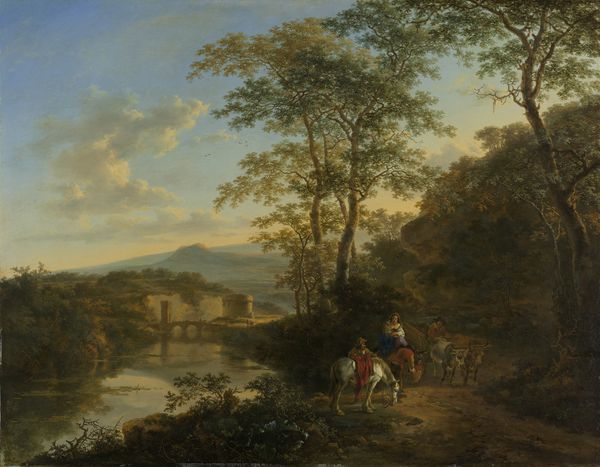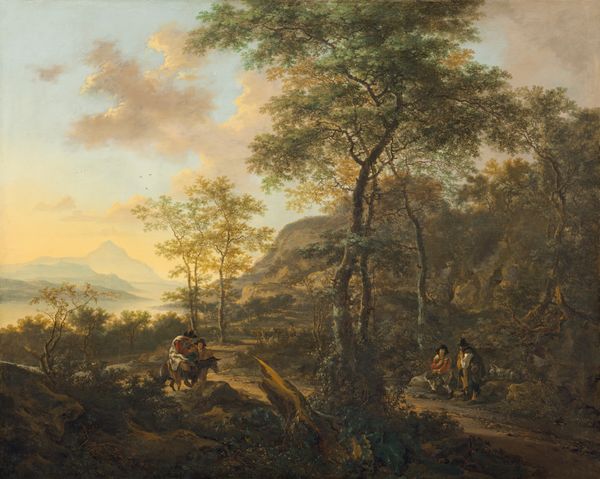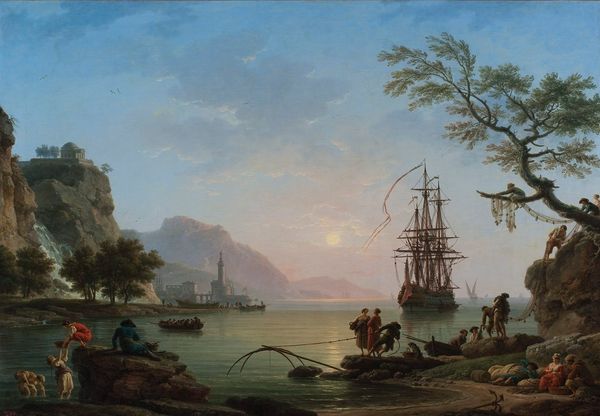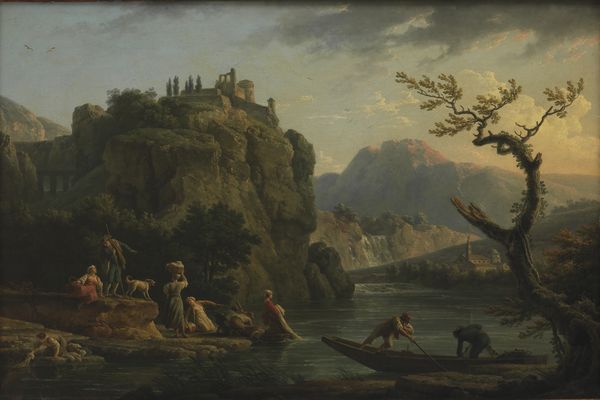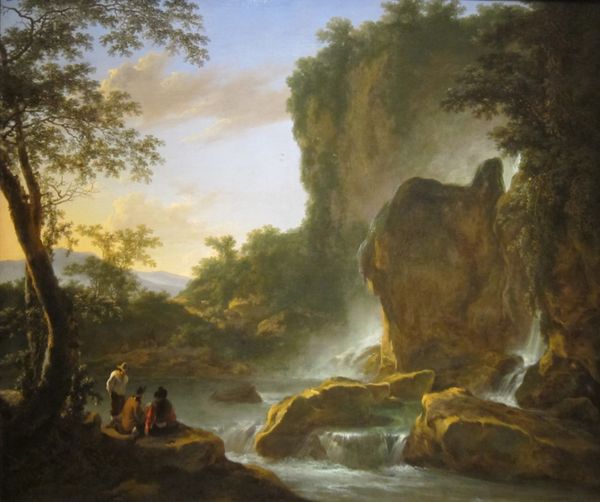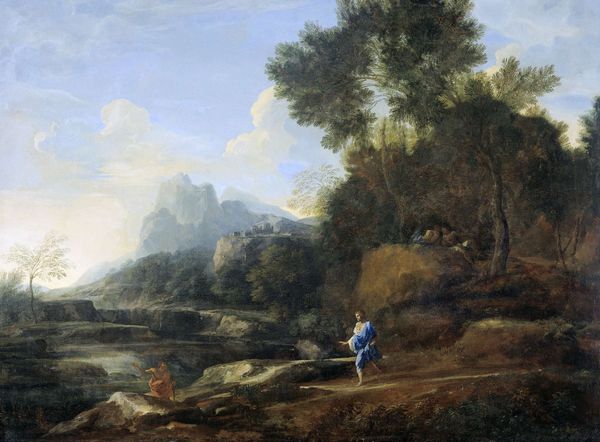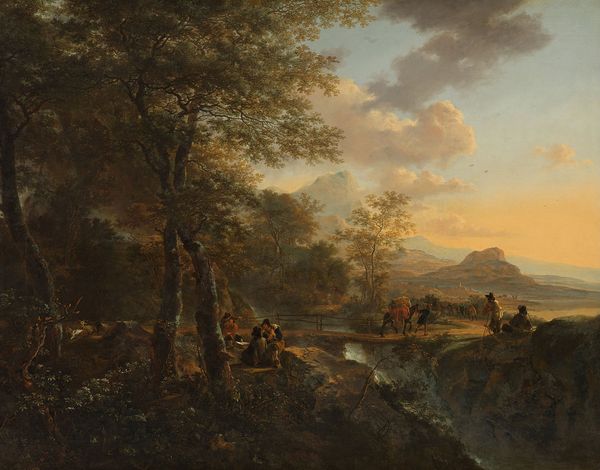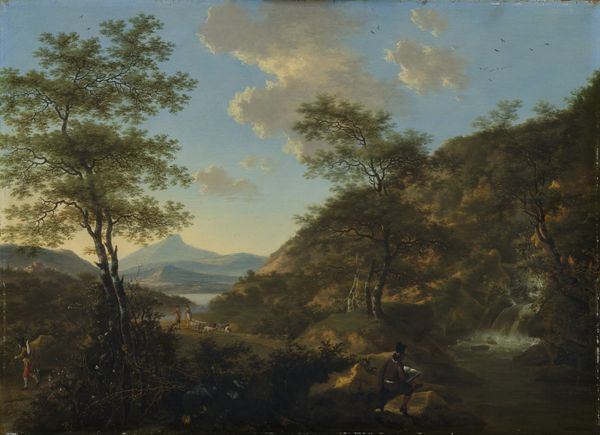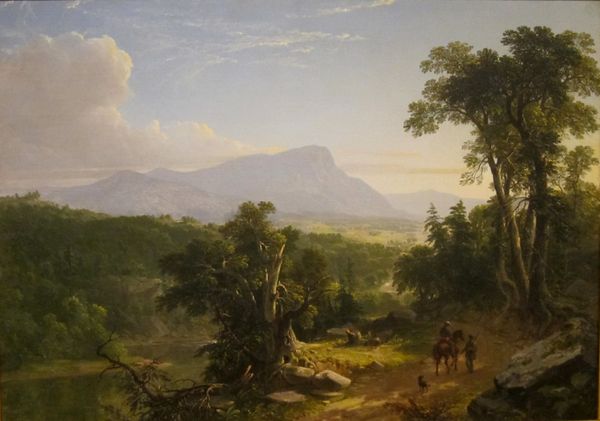
Mount Athos Carved as a Monument to Alexander the Great 1796
0:00
0:00
painting, watercolor
#
neoclacissism
#
painting
#
landscape
#
figuration
#
watercolor
#
mythology
#
history-painting
Copyright: Public domain
Curator: This is Pierre-Henri de Valenciennes's "Mount Athos Carved as a Monument to Alexander the Great," painted in 1796, currently residing here at the Art Institute of Chicago. Editor: The first thing that strikes me is the ambition of the scale, not just of the proposed sculpture but of the landscape itself, meticulously rendered in watercolor. It has this interesting, almost eerie grandeur to it. Curator: Indeed. Valenciennes was a key figure in the development of landscape painting, and here he is using that expertise to envision a colossal sculpture. Consider the labor involved, both physical and intellectual. Imagining and then executing the plans for something of this magnitude. He had to create a study, carefully planning its implementation. Editor: Absolutely, and situating this within the context of the late 18th century, we have the rise of Neoclassicism deeply intertwined with notions of empire and conquest. Alexander the Great becomes a symbolic figure of Western power, his image literally carved into the landscape, staking claim. The whole idea reeks of imperial arrogance. Curator: And it is just a proposal, an idealized landscape, revealing a particular mode of architectural imagination for the period. It's important to consider what materials would have been accessible and the environmental cost of realizing such a vision in Mount Athos at this time. The relationship between artistic ideation and material resources are definitely worthy of closer study. Editor: Exactly. And who benefits from such an endeavor? We see a small group of onlookers in the foreground. Are they awed? Oppressed? How does the massive monument overshadow their existence? The image, its composition and message is complex, revealing social anxieties surrounding power, representation and history painting at this particular moment in the West. Curator: Looking closely, the atmospheric perspective is skillfully applied to evoke this vast distance, this unreal monumentality. Note the subtle gradations in tone, the layering of watercolor washes. Editor: Thinking about today, this painting invites us to consider monuments and their purpose and impact critically. Who gets remembered, and at what cost? Curator: It brings into question our current mode of sculpture, particularly when dealing with this amount of human imagination and craft. Editor: Right, it prompts us to analyze art as a product of social forces, laden with meaning, beyond aesthetics.
Comments
No comments
Be the first to comment and join the conversation on the ultimate creative platform.
